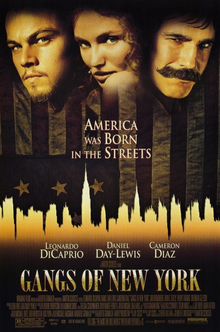The Ballad of Buster Scruggs
|
| Tim Blake Nelson in the title segment of The Ballad of Buster Scruggs |
The Kid: Willie Watson
Curly Joe: Clancy Brown
Curly Joe's Brother: Danny McCarthy
Frenchman: David Krumholtz
Near Algodones
 |
| James Franco in the "Near Algodones" segment of The Ballad of Buster Scruggs |
Teller: Stephen Root
Posse Leader: Ralph Ineson
Drover: Jesse Luken
Meal Ticket
 |
| Liam Neeson in the "Meal Ticket" segment of The Ballad of Buster Scruggs |
Impresario: Liam Neeson
Artist: Harry Melling
Bawd: Jiji Hise
Chicken Impresario: Paul Rae
All Gold Canyon
 |
| Tom Waits in the "All Gold Canyon" segment of The Ballad of Buster Scruggs |
Young Man: Sam Dillon
The Gal Who Got Rattled
 |
| Grainger Hines in "The Gal Who Got Rattled" segment of The Ballad of Buster Scruggs |
Alice Longabaugh: Zoe Kazan
Mr. Arthur: Grainger Hines
Gilbert Longabaugh: Jefferson Mays
The Mortal Remains
 |
| Jonjo O'Neill and Brendan Gleeson in "The Mortal Remains" segment of The Ballad of Buster Scruggs |
Irishman: Brendan Gleeson
Frenchman: Saul Rubinek
Lady: Tyne Daly
Trapper: Chelcie Ross
Director: Joel Coen, Ethan Coen
Screenplay: Joel Coen, Ethan Coen
"All Gold Canyon" segment based on a story by Jack London, "The Gal Who Got Rattled" segment based on a story by Stewart Edward White
Cinematography: Bruno Delbonnel
Production design: Jess Gonchor
Film editing: Joel Coen, Ethan Coen
Music: Carter Burwell
Are the Coen brothers the most "American" of filmmakers? That thought occurred to me once before in commenting on No Country for Old Men (2007) and the way it and others among their major movies seemed to form "an American collage." And the six short films collected into The Ballad of Buster Scruggs only reinforce the idea: Not only are the six set in the central period of the American myth, the Old West, but they also evoke major American writers like Edgar Allan Poe, Mark Twain, and William Faulkner, as well as the two chroniclers of the vanishing American wilderness cited as sources for the segments "All Gold Canyon" and "The Gal Who Got Rattled," Jack London and Stewart Edward White. It's a very "literary" film whose characters often don't just talk, they orate, in florid 19th-century diction. And it's a film based in that very American folk genre, the tall tale. Those who task the Coens with cynicism and coldness will find ammunition in all of these short films for their argument: Every good deed or noble intention in these stories gets thwarted or maimed. There's probably no crueler story on film than the "Meal Ticket" segment. And yet, we treasure Poe and Twain and Faulkner for their frequent heartlessness, praising their ironic vision. Is it that we expect more warmth from our movies than from our literature? As a genre, the anthology film has gone out of favor, largely because so many of them are uneven in quality, and while it's easy to rank the segments of The Ballad of Buster Scruggs -- I would put "The Gal Who Got Rattled" at the top and "Near Algodones" at the bottom -- the Coens have a unifying vision that makes each segment play off of the others, the way short stories in an anthology by Alice Munro or George Saunders set up reverberations among themselves.



